No matter what sport you’re in, you most likely will have to work on your agility training to become elite. Whether you’re competing as a team and have to follow a certain athletic training program or if you simply want to be the best by working on your skills as an individual athlete, learning how to improve agility is a very important aspect in the powerful and speed-focused world of sports.
How do you improve agility with resistance training? Although there are many theories and programs that describe the perfect athletic building programming that builds speed and agility, there’s one thing we have heard from every coach out there, "We can improve Agility with resistance training."
What is Agility?
When you take a closer look at agility, you can break it up into various parts — each as important as the next. From balance to explosiveness to speed — a speed and agility training program is a multi-faceted process and should NOT be taken lightly (especially if you want to be or are already an elite athlete).
Agility can be the difference between you getting to the ball quicker than your opponent or scoring at the last second after beating the defender from a swift change of direction. See the top benefits of agility training for athletes.
So, whether you’re a team-sport player or an individual athlete, it pays off to take the time to work on your agility.
Resistance can help you to train on your agility, whether through resistance exercises or using resistance bands in an adaptive accessory like the VertiMax Platforms and Raptors.
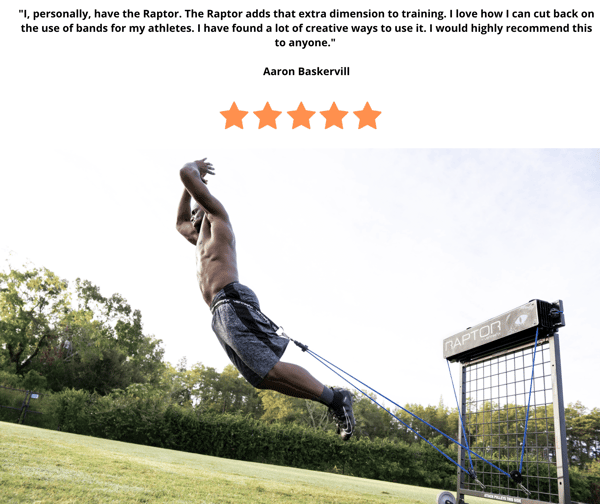
You may have heard that strength training or weight training can make you stronger, but can slow down your agility and speed. Well, there are both pros and cons on the matter.
Factors To Improve Agility For Sport
-
Strength Training
Strength training can help you with the absorption of force. If you studied physics (don’t worry, not many people do or want to), you’ll know that with the higher amount of force into the ground, the higher up their vertical jump will be. You may recognize the term "force production."
To work on this force, you need the training that can help you turn the downward power into speed on the way back up. This sort of strength training can help you with your endurance and your speed — helping you run faster and longer.
If you play in a sport that has repetitive jumps, like volleyball, this strength training will work on your absorption, which can help you recover and load up for another jump.
This absorption is also especially important when you are attempting to change direction with fluidity, which normally is important in a variety of different sports.
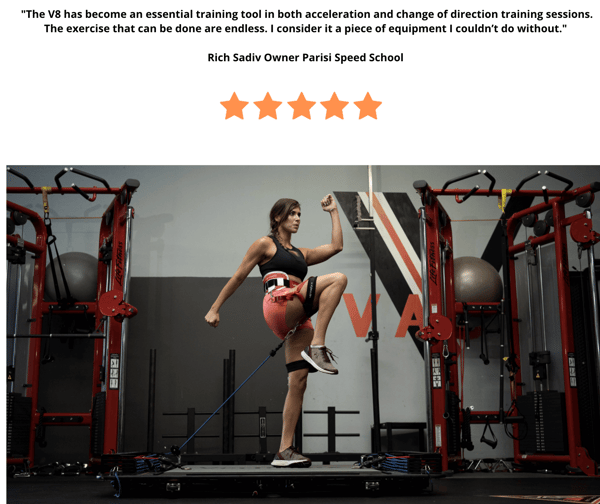
-
Resistance Training
Resistance training can increase muscle mass which can help prevent injuries. From acute to overuse injuries, athletes are no strangers to pain and getting hurt while in action.
Interestingly enough, most of the injuries that happen — think torn ACL or pulled/strained muscle — are actually done on their own—with no-fault from another opponent or coming from contact with someone else. Popularly called "non-contact injuries".
Overuse injuries over time, done on an athlete’s own can be prevented with a training program that includes resistance training. The overuse prevention focuses not only on building strength but also of increasing fitness and endurance to help avoid fatigue while in competition or during performance.
Acute injuries happen, on the other hand, suddenly. With proper training, they cannot be completely inevitable, but can definitely be less likely to happen! ]
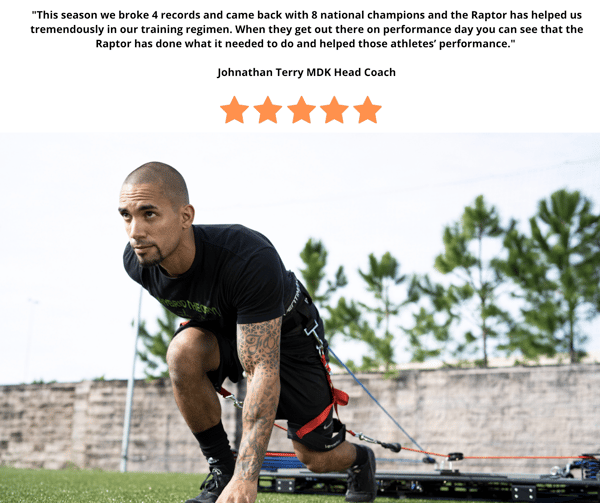
For a Sprinting Sport, resistance training can help you with your form. As every elite runner knows, form can mean the difference between a win and a loss. At that stage in elite-level athletics, every runner or athlete is just as naturally strong or fit—however, one little detail (like form) can be what sets a winner apart from someone who earns second place
Starting off young, an athlete can perform body weight exercises to help retain the proper form (that they should also learn at a young age). Speed drills like high knees and butt-kicks can help teach the form. Check out the best youth agility training workouts .
However, there’s no point in learning all that form if the athlete doesn’t have the proper strength to keep it while in motion! So to help develop a strong back, glutes, hips, and legs to help you keep your form while performing your athletic movement, resistance and strength training can help you reach your fullest potential! Check out how to improve agility with resistance training.
-
Technique and Movement
Let’s take a closer look at an aspect of athleticism we just spoke about: the smaller details in form.
You can train all you want to develop brute strength and unrefined endurance. However, if you don’t follow certain technical guidelines, especially in a sport where the smallest of a millisecond count — then you might as well just throw in the towel now. If you want to reach an elite level, the coaching of technical guidelines will not only make a HUGE different, but THE difference.
This may mean that you might have to refine your initial form—but it’ll pay off in the long run! Changing direction quickly, jumping power and speed as well as agility are multifaceted aspects of training — that’s because they are so many different types of movements in motions when completing an action.
-
Focus and Direction
Depending on the movement you’re in, you’ll need to work on the focus of your body and the direction you’re going. You need to visualize the performance of the movement before it happens.
Especially when there are other factors involved — like the response of an opponent or the ball — anticipation here is key.
You need to be focused both visually and physically, anticipating the event before it happens. This will help you with transitioning into the movement and position of your body that you need to be in!
-
Body Parts
Each part of your body plays a certain responsibility in each individual movement. Knowing the importance and knowing its role in a movement can also be trained—and is crucial for perfecting your agility.
-
-
-
-
-
-
-
Body Position
The position of your trunk during braking and re-acceleration plays a major role in how quickly you can change your direction and how safely you can come to a stop or take-off.
-
-
-
-
-
-
You should try and control where your trunk is as much as possible—which of course, takes a ton of core strength (they weren’t joking when they said you need to do your planks, however annoying they may be).
You (or your coach) should also be paying particular attention to the lean stance of your body — through physics — this has a lot to do with force application and how it’s distributed among the alignment of the trunk, knees, and hips.
-
Focus on the Legs
For deceleration and changing direction, to help prevent injury you need to have a lot of strength in the legs — as well as an effective range of motion. This can help you avoid getting self-inflicted injuries like the turn of the knee producing an ACL tear, etc.
Focusing on pushing off of the ground when doing certain movements can help you gain the power you need to accelerate quickly and effectively.
When concentrating on the ground instead of focusing on your own body, you make the movement more naturally, which can help transition that movement and form into your performance when you don’t have time to think about it.
-
Focus on the Arms
Although you may think that the majority of the power lies in your legs, you might be surprised to know that your arms also play a pretty important role in power drive.
To help you with coordination and to assist with the movements in your legs, arm actions help you move along with your legs (they’re not working against them which slows you down), and helps you in transitioning movement or changing direction overall.
Basic Agility Training Drills with Resistance
Now that you got the basics down, you’ll want to go full force into working on your agility through resistance training.
Whether you’re using VertiMax technology or not, you’ll definitely need to keep in mind what types of training tools you can use to help enhance performance and your cognitive ability—as well as develop an intuitive reaction.
From effective and rapid braking to re-acceleration and changing direction, you’ll need a tool that can work simultaneously yon your shoulders, trunk, and hips.
To help you out with training, here are a 2 basic drills you can do with or without your VertiMax products:
-
1. Speed Ladder
Something that really gets your feet (or hands) moving as quickly as possible, the speed ladder is a great tool to use to work on your fundamental footwork skills, which can help you increase your speed and improve aspects of agility.
Using VertiMax with the speed ladder can also play a role in developing your acceleration. Adding resistance bands with VertiMax equipment can help you improve your muscle activation since you’ll be working with tension and restraint.
Fortunately, there are so many different types of drills, skills, and footwork you can work on when it comes to the speed ladder — you can even set up in a push up position and work on the speed of your arms and hands.
While working on the speed ladder, you should also remember that form is important. With every drill and repetition, make sure you’re keeping good form and athletic stance as much as possible. You can also use this time to really focus on the coordination of your hands, arms, and legs, all working together.
To help keep you balanced, keep your chest over your hips, which focuses on maintaining your center of balance.
-
2. Cone Shuffle:
Using cones, set up in a grid of your choosing can help you work on changing direction, shifting in position and moving in short bursts of sprints from one way to another. Just like the ladder drill, there are so many different combinations that can get you working and keep you from getting bored.
Depending on the cone configuration, you can mimic the way your movement should be athletically while you’re playing and performing in your sport.
When done with resistance, this can help you build the leg strength and coordination you need to move the way you should. This is especially helpful in sports where you’re changing direction, stopping immediately, and accelerating again as quickly as possible, like in volleyball or tennis.
The cone configurations (done with resistance from VertiMax) can have you moving laterally, forward, backward, and diagonally. This exercise will help you focus on acceleration on balance as you’re moving about.
Training to Become a Professional Athlete and Become a Master of your Craft
Having the proper agility and speed training equipment to help assist you with speed and agility training goals can definitely give you that boost in your performance that you’ve been looking to achieve. While you don’t have to have all these resistance equipment to do well, they do help!
Professional athletes and coaching staffs around the world utilize the VertiMax patented resistance technology to help elevate athletic performance.
Also use the 8 Best Agility Training Exercises to help you focus on the challenges ahead while the resistance can push you past your potential. It doesn't matter which program you have, it's important to focus on your positioning, vision, and each individual movement.
Hopefully, with practice, you won’t have to focus too much on the rotation of your hips, the movement of your arms, the way your core moves or the direction you want to move your body — but that it will all come natural with time.
However, when you’re first starting out, you should definitely do your best to focus on form before adding resistance. Training to become a master takes practice and dedication— and starting from square one.
View more free and premium videos for sport specific agility training drills with the VertiMax App.

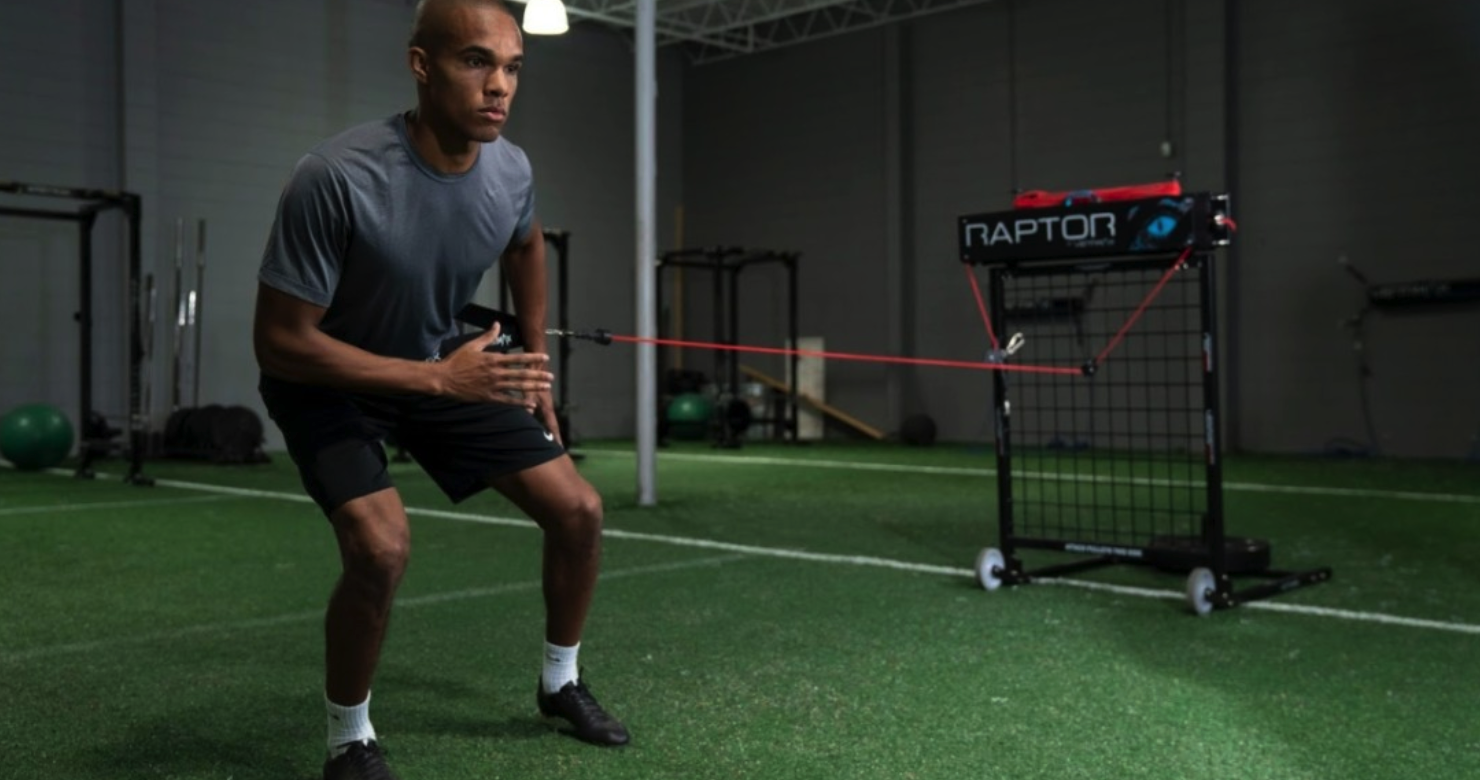
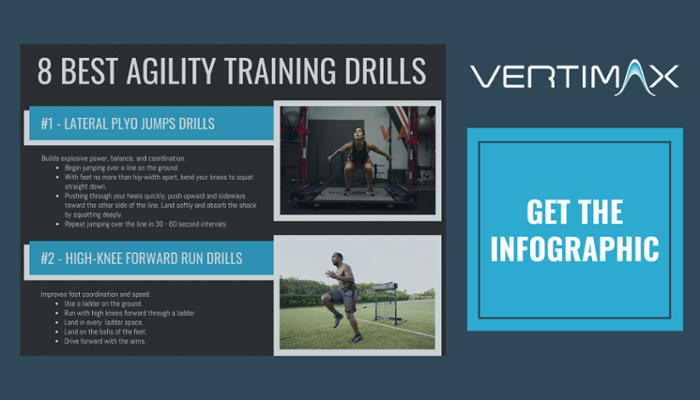
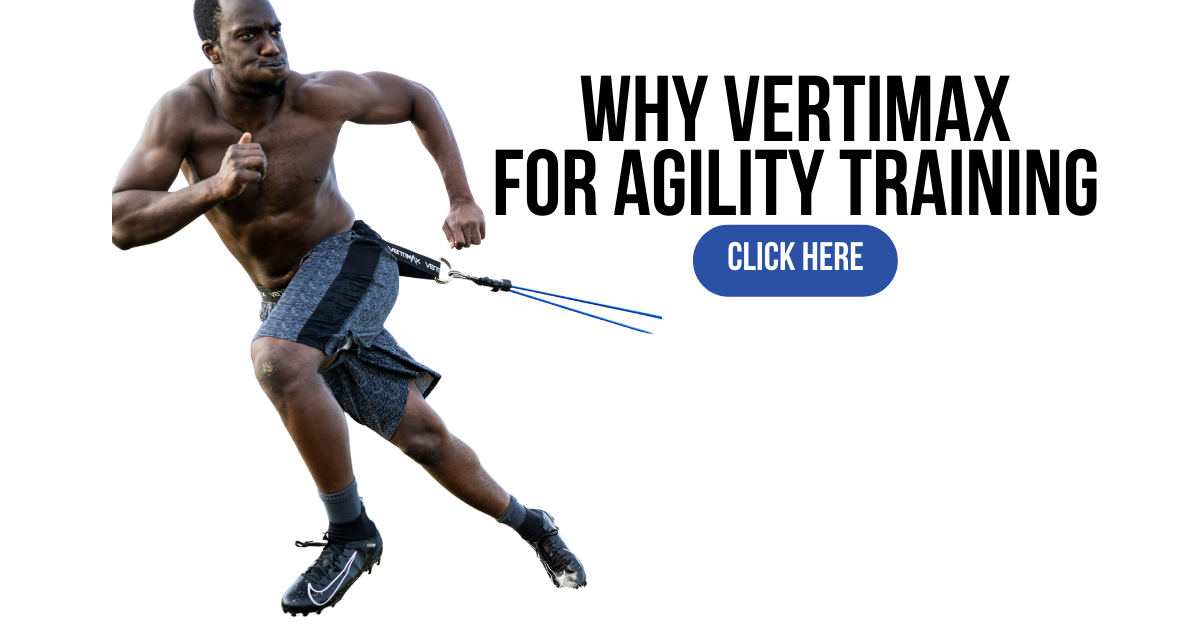


.png?width=110&name=Listing%20Image-basketball%20ladder%20drill%20%20(350%20x%20350%20px).png)














